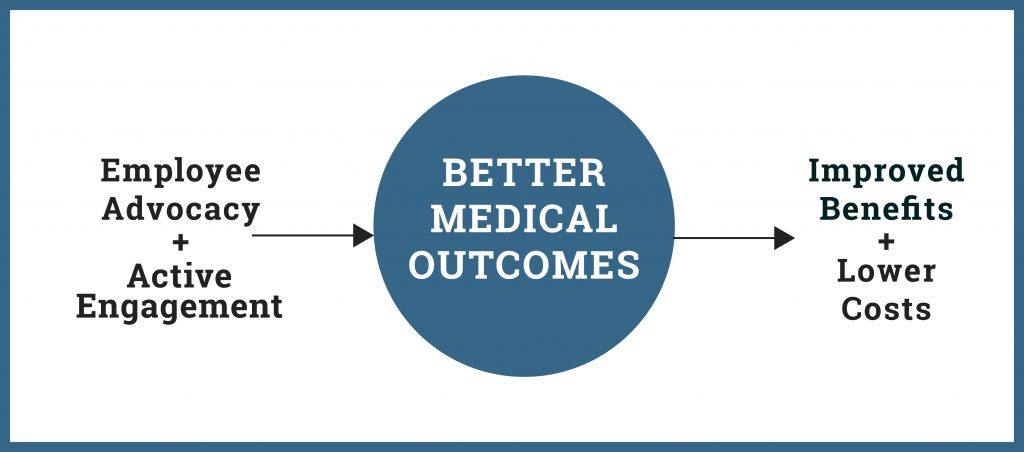What is the top goal of workers’ compensation? Each state system, academics and commentators respond a bit differently. For example, the 2018 “Setting the Standard” report of the Texas Department of Insurance references several goals for workers’ compensation, like ensuring injured employees receive prompt and appropriate medical treatment, maintaining enough participating physicians, and returning injured employees to safe and productive employment.
The 2018 Workers Compensation Benchmark Study from Rising Medical Solutions surveys 17-hundred claim executives on what they believe is the most valued claims outcome. Their answer was similar: “Returning injured workers to the same or better pre-injury functional capability.”

At their core, these answers – and the most significant common quest for Texas workers’ compensation and Texas injury benefit programs – may be simpler:
Achieving Better Medical Outcomes.
Improved medical outcomes naturally mean:
- Fewer lost days from work and less wage loss for injured workers.
- Greater ability to do your job and care for the needs of yourself and your family.
- Less cost for employers.
Outcomes are the key to most, if not all, work injury system objectives! But only on rare occasion does the dialogue advance with studies like the Workers Compensation Research Institute’s 2018 “FlashReport” on the Time from Injury to Medical Treatment. Most WCRI research, as well as research from the National Council on Compensation Insurance and others, focuses on cost benchmarking. Its most practical use is setting insurance rates to adapt to the latest reforms and successful constitutional challenges. What if a significant percentage of the hundreds of millions of dollars for workers’ compensation research were instead channeled to identifying and advocating for system reforms that generate Better Medical Outcomes for injured workers?
Parts 2 and 3 of this six-part series discuss “Employee Advocacy” and “Active Engagement” by injured workers, employers and medical providers. We intuitively know these two things produce better medical outcomes. And we know that exceptionally better (not just incrementally better) medical outcomes are the only viable path to increasing benefits for injured workers AND, at the same time, improving the bottom line for employers.
We’ve seen many examples of exceptionally better medical outcomes under Texas injury benefit programs. For instance, a 2016 study from Stanford University’s Institute for Economic Policy Research found:
- Frequency of severe, traumatic employee injury claims is cut in half, and
- Percentage of employees disabled drops by a third.
One key reason is these programs gain access to the right providers at the right time, freed from regulatory complexities that delay care and cause 64% of Texas physicians to decline to see workers’ comp patients. (Also see this “physicians’ view”.)
There is a lot of data out there, with well-over one million Texas injury benefit claims successfully resolved in the past three decades. Statistically credible samples have been reviewed by the most sophisticated actuarial teams in America, publicly reported, and not been challenged. Perhaps the time is nearing when the attention of thought leaders for injured workers and employers, and further independent research, can further turn to how these better medical outcomes are achieved.

